If you’ve got this plant recently and looking for Peace Lily Care and Growing Advice–It’s easy to grow! Plus, it doesn’t mind low light and purifies the air.
Common Names: Spath, White sails, Spathe flower, Cobra plant
Botanical Name: Spathiphyllum wallisii
Flowering Time: Throughout the year, sporadically
Peace lilies planted indoors are a show stealer with their white flowers and dark green glossy foliage. The unique white flowers are actually the curved bracts or modified leaves covering the actual small flowers.
Peace lily care and growing is easy, which makes it one of the most popular houseplants. It grows without direct sunlight and purifies indoor air, not to mention the fact that it was a part of the famous NASA clean air study.
Check out scientifically proven Peace Lily Growing Benefits here
Requirements for Growing Peace Lily
Best Location and Peace Lily Light Requirements
The many different species of peace lilies are native to the tropical regions of Southeast Asia and America–it grows naturally under the canopy of trees in the warm and humid weather of rainforest.
Any spot that replicates these conditions is best for its growth. As it requires a warm and shady spot with constant temperature, it does best indoors as a houseplant. So, if you have space somewhere in your home, where it can receive bright indirect daylight, a few hours of morning sunlight that would be best.
Cold drafts and the hot and dry wind is detrimental to this plant, so keep it away from such places.
Learn about the best peace lily varieties here
Keep peace lily and other houseplants that prefer humid surroundings away from the air vents of your AC and heating units. Keeping this plant close to a dehumidifier is also a NO, NO!
How Often to Water a Peace Lily?
Peace lily prefers evenly moist soil when grown outdoors. You can keep the soil slightly moist all the time for your indoor peace lily, but this might lead to overwatering if you are not very skillful at growing houseplants or don’t have a green thumb.
Follow this “better safe than sorry” strategy and water only when the topsoil is a bit dry to touch, and whenever you water, do it thoroughly, until it starts to drain out from the bottom holes.
Generally, watering once every 5 to 10 days is enough to fulfill the plant’s needs. The frequency of watering depends on many factors such as the amount of light it is receiving, weather, temperature, and the size of the pot.
Watering Tips
- If this indoor plant requires water frequently, it must be root bound and needs repotting.
- If you’re very new to growing indoor plants, wait for the plant to droop a little before watering again so that you’ll know it definitely requires water.
- Must check out these houseplant watering tips to learn more.
Container Size
The diameter of the pot ranging from 8 to 10 inches should be enough to hold a mature peace lily plant. Initially, you can plant it in a smaller container that is 6-8 inches wide and deep, similarly or more. If you’re growing two-three of these plants together, you’ll need a large 12 inches pot.
When the plant outgrows the current pot, move it to a new container that is a couple of inches large in diameter. If you don’t want to change the pot, take out the plant and divide the rootball and repot the mother plant again. This way, you’ll have new peace lily plants, and the mother plant will have more space to spread the roots.
Don’t fret when it comes to the material–clay, ceramic, metal, wood, and plastic; all are suitable. To avoid waterlogging, providing drainage holes at the bottom is most important.
Have a look at the most pretty peace lily pictures from Instagram here
Best Soil for Peace Lily
Growing under the canopy of trees in the rainforest in their natural habitat, peace lilies have an abundance of dead and decaying matter in the growing medium.
That’s what you’ll need to keep in mind when choosing the potting mix. The presence of coarse sand, perlite, composted bark, peat, well-rotted compost, and other organic matter, especially leaf mold will make the potting medium perfect.
Also, it should be light and well-draining. You can learn how to make homemade potting mix here or buy the commercial one meant for houseplants.
Peace Lily Care
Maintaining the Humidity
As you know, peace lily loves to reside in warm and humid conditions. To replicate the natural environment of the rainforest, you can mist the plant regularly. Fill the spray bottle with dechlorinated water and spray it over the foliage and surrounding.
Misting alone is not much helpful in generating humidity, so do these things as well:
Better than misting, use the humidifier around the peace lily and other tropical houseplants when the air is dry. Humidifiers are the cheap and best alternative when it comes to increasing the humidity of indoor plants. Check out our informative article to learn about more options.
Transplanting or Repotting a Peace Lily
Peace lily needs to be transplanted into a new pot when it has outgrown the older one. If you are vigilant about the signs, you’ll know the time has come to re-pot. Increased watering needs, yellowing leaves, roots getting crowded, and showing on the surface, emerging new plants around the mother plants are some of the signs. The average period in which re-potting is done ranges from every one to two years.
Learn what you need to propagate peace lilies from a peace lily here
Provide Support to Your Peace Lily
The recently transplanted peace lily might have difficulty standing upright without any support. As the roots of the newly potted plant are not well established.
To remedy this, bury a stake or dowel near the plant and tie it using a wire or rope. Once the plant is established and can stay upright on its own, gently remove the stake.
Cleaning the Leaves
Cleaning and wiping the peace lily foliage from time to time is crucial to get rid of accumulated dust, also, it will help you in identifying and removing pests like spider mites. Dirt caked on the leaf surface affects photosynthesis. Identify if your plant has lost its glossiness and natural color–if so, it’s time to clean it.
For this, get a soft cloth and rub it over the leaves. Or, dip it in a solution of one tablespoon of apple cider vinegar and one gallon of water and apply it gently on dirty leaves. Check out more apple cider vinegar uses here.
Proper Fertilization
Peace lily care is easy–Adequate watering and all-day-long bright indirect sunlight is enough to keep the plant healthy. Still, for prolific growth and flowers, you should fertilize it. Any balanced liquid houseplant fertilizer like 20-20-20 diluted to half or quarter of the recommended strength is suitable. Apply it after every 2-4 weeks in the growing season (year-round in the tropics) or when the plant needs nutrients.
To learn more about peace lily fertilization and how to encourage blooming–Read this
NOTE: Plant producing green blooms and brown leaves with burnt edges can be an indication of overfertilization. Stop fertilizing as soon as you observe this symptom and flush the soil with water.
Pruning Peace Lily
Peace lilies are clump-forming but non invasive plants and do not require regular pruning. However, you should consider pruning away dying and unhealthy leaves for proper growth of the plant.
Leaves wilting and turning brown is a sign that these are about to die. Trim them using sharp and cleaning pruning shears.
To learn about common peace lily problems and how to solve them, click here
Pests and Diseases
It’s mostly pest-free, but some common pests such as aphids, spider mites, and mealybugs might trouble the plant. Wiping the leaves is enough to get rid of these pests; you can also handpick them. In case of severe pest infestation, spray the plant with the insecticidal soap solution.
Leaves and their tips turning brown can be a sign of overwatering, lack of humidity, or over-fertilizing. Wilting, dry foliage is a sign of lack of watering, be vigilant about these symptoms and don’t miss this article here, which talks about these symptoms efficiently.
Peace Lily Benefits
- This low-maintenance plant is suitable for living rooms, kitchens, home offices, and bathrooms.
- It removes mold spores and brings calmness. All this makes it an ideal bedroom plant.
- It’s a safe houseplant for your kids and pets. It contains calcium oxalate crystals, which is found in many fruits and vegetables. Eating its leaves can cause mild irritation in the throat and a burning sensation on the tongue.
- Peace lily removes VOCs and can absorb benzene, formaldehyde, toluene, xylene, and carbon monoxide.


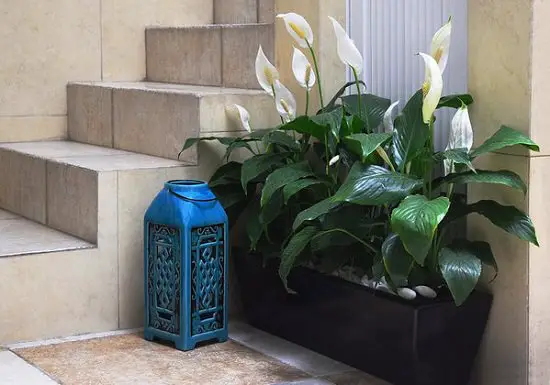
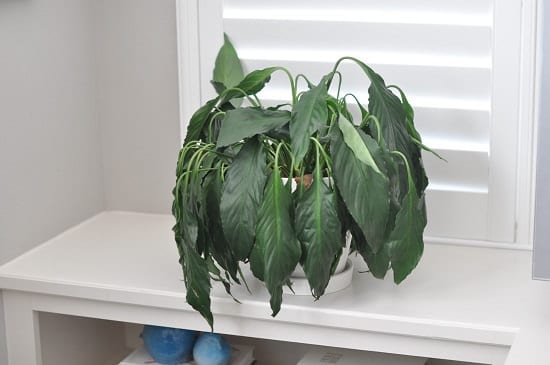
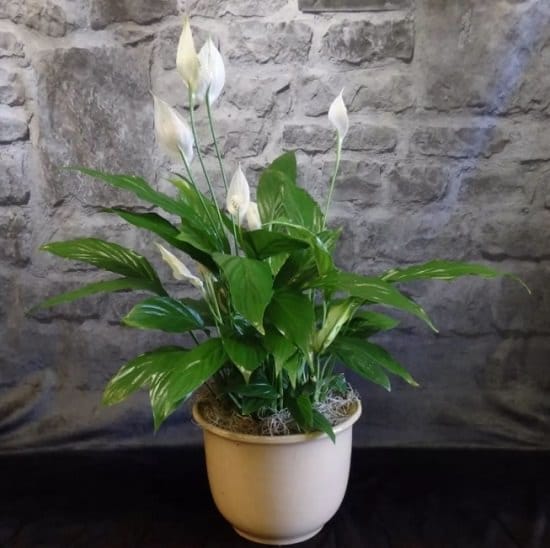
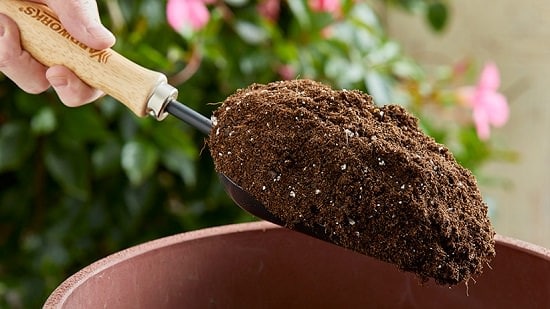
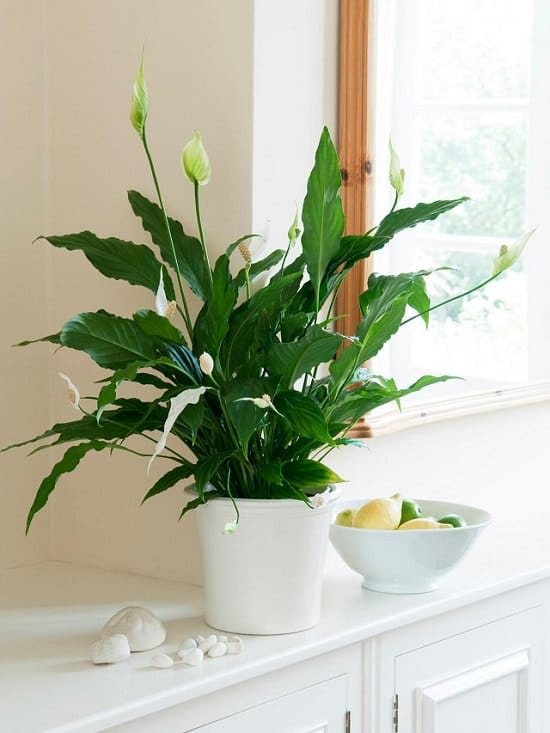


I was gifted a Peace Lily transplant. It came with a gnat infestation – the gnats overwhelmed the whole room in my house! I solved the problem by using a hydrogen peroxide diluted in water to wipe the leaves and actually poured the diluted solution into the pot. That killed the gnat larvae. No more adult gnats flying around.
I have a big problem with my flower. Once it is completely green, and often catches some of its leaves turning yellow. Or some green leaves at the very tip are withering at the tips. I don’t know what’s wrong with him and how to make him always look beautiful. Do they constantly need to be repotted into larger pots, or does it eventually stop growing because it takes up the entire pot from time to time and I repot it into a larger one?